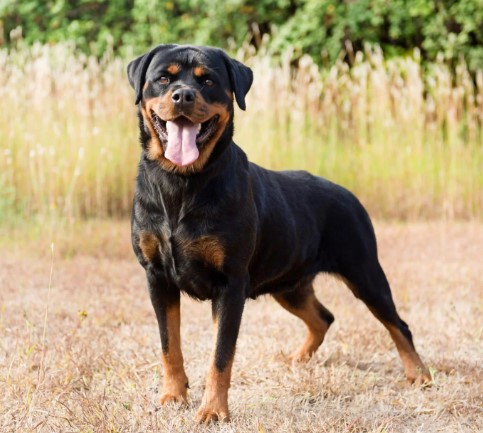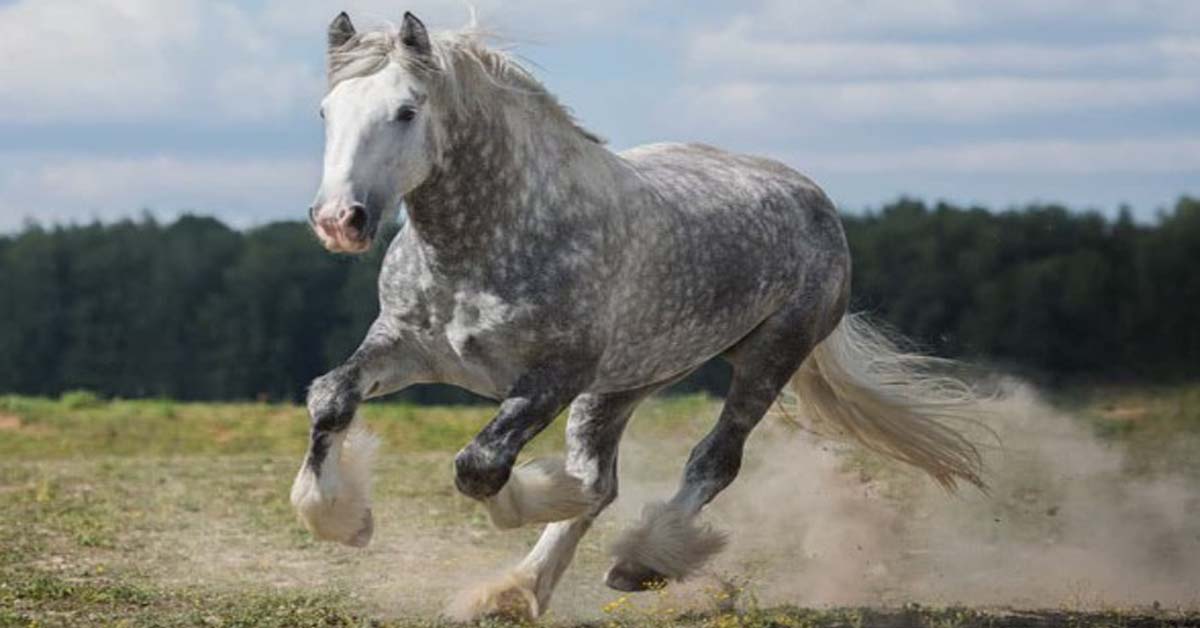England cultivated a distinguished horse breed specifically designed for racing and jumping. The inception of the Thoroughbred can be traced back to historical records indicating the introduction of Arab and Barb horse stock into England as early as the 3rd century.
Favorable natural conditions contributed to the development of the original stock, and selective breeding gained traction among racing enthusiasts. During the reigns of James I and Charles I, 43 mares known as the Royal Mares were imported into England. This prompted the initiation of the General Stud Book, a record exclusively listing horses traceable to England.
The lineage of the Royal Mares extended directly or to one of three other horses imported to England: Byerley Turk (1689), Darley Arabian (after 1700), and Godolphin Barb (circa 1730). The English Thoroughbred has since been disseminated to numerous countries, where it is either bred for racing or utilized to enhance local breeds.
In the 1730s, Bull Rock, a descendant of the Darley Arabian, was brought to Virginia. Over the subsequent 45 years, 186 Thoroughbreds imported from England laid the foundation for Thoroughbred breeding in the United States.
Characterized by delicate heads, slender bodies, broad chests, and short backs, Thoroughbreds possess short leg bones conducive to effortless walking. They exhibit sensitivity and high emotional responsiveness.
With an average height of 16 hands (64 inches or 163 cm) and a maturity weight of approximately 1,000 pounds (450 kg), Thoroughbreds typically display bay, chestnut, brown, black, or gray coloring. Renowned for their speed and endurance, they have contributed to and elevated various other horse breeds.
It’s important to note that the term “Thoroughbred” is occasionally misused to denote purebred, but Thoroughbreds constitute a distinct breed documented in the General Stud Book of the English Jockey Club established around 1750 or in the studbooks of analogous clubs in different countries.
- Origin: Englan
- Weight: 450kg – 550kg
- Height: 15 hands – 17 hands
- Lifespan: 25 – 35 years
- Best For horse racing, show jumping, dressage, and more
Thoroughbred Horse Breed characteristics
A typical Thoroughbred stands between 15.2 to 17.0 hands (62 to 68 inches, 157 to 173 cm) tall, with an average height of 16 hands (64 inches, 163 cm). Common colors include bay, dark bay or brown, chestnut, black, or grey.
In the United States, less common colors like roan and palomino can be found. White is a rare but recognized color, separate from grey. While the face and lower legs may have white markings, the body typically does not. Coat patterns featuring more than one color on the body, such as Pinto or Appaloosa, are not acknowledged by mainstream breed registries.
High-quality Thoroughbreds exhibit well-set heads above long necks, high withers, deep chests, short backs, good hindquarter depth, lean bodies, and long legs. Classified as “warm-blooded” breeds, Thoroughbreds are specifically bred for agility and speed, often characterized as energetic and bold.
Official age reckoning for individuals born in the Northern Hemisphere occurs on the first of January each year, while those born in the Southern Hemisphere age officially on the first of August. These designated dates facilitate the standardization of races and competitions for horses within specific age categories.

Thoroughbred Horse History
The roots of Thoroughbreds can be traced back to the late 17th century in Great Britain. In this period, horse racing had been a longstanding tradition, and people engaged in selective breeding to enhance the racing qualities of horses.
Three prominent stallions were brought into England during the late 1600s and early 1700s: the Byerley Turk, the Darley Arabian, and the Godolphin Arabian named after their respective owners, a common practice of the time. Despite an ironic twist where none of these stallions ever participated in races, they became the foundational sires of Thoroughbreds. Foundation mares were sourced from various breeds, both indigenous and imported.
The outcome of this careful breeding was a horse characterized by strength, speed, and endurance. The first instances of these Thoroughbred breeds arrived in the American colonies during the 1730s, although imports came to a halt during the Revolutionary War.
Horse racing gained momentum in the United States throughout the 1800s, with Kentucky and Tennessee emerging as focal points for Thoroughbred breeding and racing. Additionally, the influence of Thoroughbreds extended to various other horse breeds, shaping the characteristics of breeds such as the American Quarter Horse, Standardbred, and Morgan.
Appearance
The athletic Thoroughbred presents a tall, slender figure featuring a broad chest and a concise back. Tailored for speed, this horse breed embodies several physical attributes conducive to its purpose, including a streamlined body, elongated legs, and a well-defined head.
Predominant colors among Thoroughbreds include black, brown, gray, bay, and chestnut, with Roan and Palomino variations occasionally appearing in the United States, albeit infrequently.
The breed registry favors solid-colored Thoroughbred horses, disregarding those with multiple colors on their bodies. While white markings on the face and body are permissible, they are uncommon occurrences in Thoroughbreds according to registry standards.
Temperament
Thoroughbred horses, as a breed, display intelligence, energy, and a robust work ethic. Their bold and spirited nature makes them better suited for riders with experience rather than beginners.
Beyond excelling as racehorses, Thoroughbreds exhibit versatility, thriving in various disciplines such as dressage and on the road. The upbringing of Thoroughbred horses plays a role in their temperament, as years spent on the racecourse can lead to a tendency to feel overwhelmed and may require additional effort when transitioning to regular riding.
Despite these challenges, organizations like RoR are dedicated to assisting former racehorses in finding fulfilling homes. Properly managed, this process can be incredibly rewarding for both the horses and their new owners.
Personality
The term “spirited” aptly characterizes Thoroughbreds as a breed, known for their quick-wittedness, agility, and at times, a swift temper.
Contrary to misconceptions, Thoroughbreds are not inherently mean-spirited; rather, their temperament often results from boredom rather than a lack of intelligence or clarity in commands.
Thoroughbred horses thrive on activity and challenges, disliking idleness. They find fulfillment in tasks and challenges, and a smart Thoroughbred left unoccupied can face frustration or even pose potential issues.
Observing a Thoroughbred learning something new, you might notice their tongues moving in a thoughtful manner, indicative of deep concentration, attentiveness, and memory recall.
Their intelligent minds bring forth a complex nature. As keen observers, learners, and memory holders, Thoroughbreds are well-equipped to form intricate relationships. They form strong bonds with humans who consistently engage with them, learning and understanding their habits.
Once in sync with their human counterparts, Thoroughbreds become loyal, trustworthy, and affectionate companions. The partnership between rider and Thoroughbred is crucial, as these horses exhibit an ability to make informed decisions even while under saddle, demonstrating the depth of their understanding and connection with their riders.
Health
Primarily due to their involvement in racing, Thoroughbreds are susceptible to various equine health issues. The demands placed on them during races contribute to a heightened risk of accidents, leading to injuries that can be life-altering or fatal.
Apart from accidents, many racing Thoroughbreds struggle to maintain soundness and may encounter issues like stress fractures or bone chips throughout their racing careers.
Health problems specific to Thoroughbreds include occurrences such as lung bleeding, often attributed to excessive exercise or breeding practices.
Low fertility rates are also a prevalent concern, and some Thoroughbreds exhibit abnormal features like undersized hearts or hooves disproportioned to their body size, potentially contributing to lameness.

Care
Thoroughbreds benefit from standard equine grooming routines. Brushing them at least twice a week and conducting daily checks and cleaning of their feet is essential for injury prevention and infection control.
When grooming a Thoroughbred, it’s crucial to exercise extra care, given their thinner skin compared to many other horse breeds.
Food
Thoroughbreds adhere to a standard equine diet, consisting of quality hay, grain, and occasional fruits and vegetables. Depending on individual nutritional needs, vitamin and mineral supplements may be recommended. Given their fast metabolisms, Thoroughbreds may require a larger quantity of food compared to other horses of similar size to sustain a healthy weight.
Feeding
Thoroughbreds undergoing training for breeding need to double their regular energy intake. Our guide outlines optimal feeding practices for their offspring.
Thoroughbred racehorses demand a well-balanced diet rich in energy and essential nutrients to meet the rigorous requirements of training and racing.
For young and growing 2-3-year-old horses, an additional supply of energy, protein, calcium, and trace minerals is crucial to support performance, growth, and facilitate bone modeling and muscle development.
The diet must fulfill all essential requirements, tailored to the horse’s weight, training stage, age, exercise demands, and temperament.
To sustain vitality and accommodate the horse’s reduced appetite under the strain of regular intense exercise, adjustments in feed mix, additives, and portion sizes may be necessary.
A meticulously crafted hand-mixed ration offers the adaptability needed to align with an individual horse’s evolving demands, preferences, and appetite levels throughout its training and racing journey.
Grooming
Thoroughbreds benefit from adhering to standard equine grooming practices. It is advisable to brush them at least twice a week and diligently inspect and cleanse their feet daily to identify injuries and mitigate infection risks.
Given the Thoroughbred’s thinner skin compared to many other breeds, it is crucial to exercise extra care during grooming. The horse may be more sensitive, possibly harboring resentment, particularly if any sore spots are noticed.
Approach the grooming process gradually, offering treats or praise as positive reinforcement for good behavior. Opt for gentle grooming tools, such as brushes with natural bristles rather than nylon, to ensure a comfortable experience for the horse.
Thoroughbred Horse Training And Exercise
For decades, numerous accomplished trainers of Thoroughbred racehorses have achieved success without any formal grasp of the science behind exercise or training.
However, recent years have witnessed a shift in traditional approaches, incorporating new scientific discoveries that, in certain instances, have led to improved outcomes. Many trainers now integrate equine exercise science as a valuable tool in their training regimen.
This chapter introduces some of the research-based principles pertinent to the training of Thoroughbred racehorses. Despite the seemingly straightforward nature of training Thoroughbred racehorses, the endeavor is intricate.
The metabolic demands on Thoroughbred horses differ significantly when racing over the standard distances of 1000 to 3200 meters (5 to 16 furlongs). Additionally, there is a lack of published studies segregating the contributions of anaerobic and aerobic adenosine triphosphate (ATP) supply to such events.
Findings from a portable mask system suggest that, in Thoroughbreds, racing primarily engages aerobic rather than anaerobic metabolic pathways. This aerobic contribution can account for up to 90% of the energy supplied by aerobic pathways in a 2-mile race.
Consequently, Thoroughbred trainers need to design training programs that challenge both aerobic and anaerobic energy pathways to enhance endurance and speed.
Comparisons of training methods for Thoroughbreds across different countries reveal various approaches to achieving these objectives. Most Thoroughbred training methods can be dissected into distinct phases, as elaborated below.
Adoption Center || Thoroughbred Horses For Sale
See More Horse Breeds For Further Research
FAQs
Thoroughbred Horse Prices in India:
₹300,000 to ₹1,200,000
Meaning of Thoroughbred:
A Thoroughbred refers to a purebred or pedigree animal. In a capitalized context, it specifically denotes English-bred, light, and speedy horses primarily kept for racing. These horses have their origins in crosses between English horses and Arabian stallions with uncertain ancestry. The term can also signify a fully educated or skilled person.
Formation of Thoroughbred:
The Thoroughbred, as recognized today, evolved in 17th and 18th century England through the crossbreeding of native mares with imported Oriental stallions, including those of Arabian, Barb, and Turkoman breeding.
Speed of Thoroughbreds:
Thoroughbreds are renowned as the fastest horses globally, dominating the horse racing industry. In contrast, Arabian horses are known for their intelligence and excel in endurance riding. Various horse breeds are employed in racing, dressage, and general riding.
Differences Between Horses and Thoroughbreds:
Thoroughbreds are taller than Quarter Horses but lack the same level of muscularity. While Quarter Horses are shorter than Thoroughbreds, they tend to have a higher average weight. Specifically, a Quarter Horse weighs between 1,000 lbs and 1,200 lbs, while a Thoroughbred typically ranges from 800 lbs to 1,200 lbs.












2 thoughts on “Thoroughbred Horse: Origin, Height, Weight, Special Information”